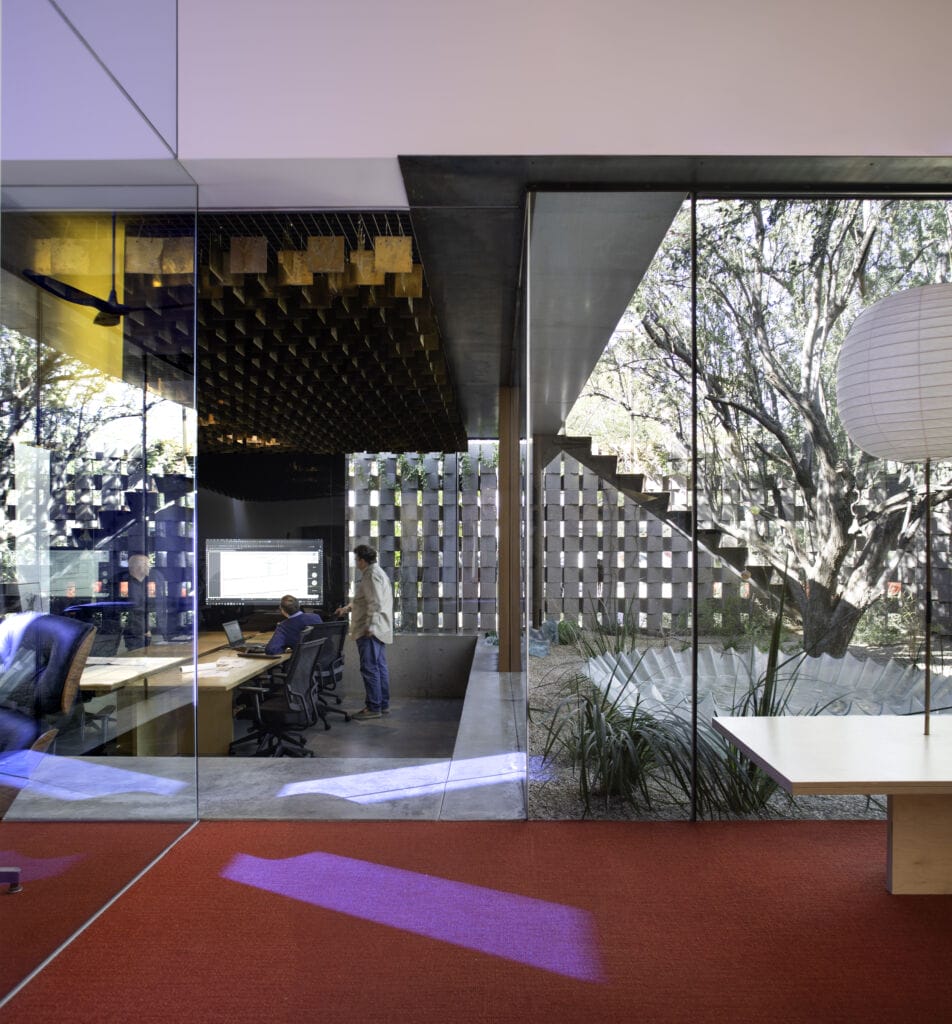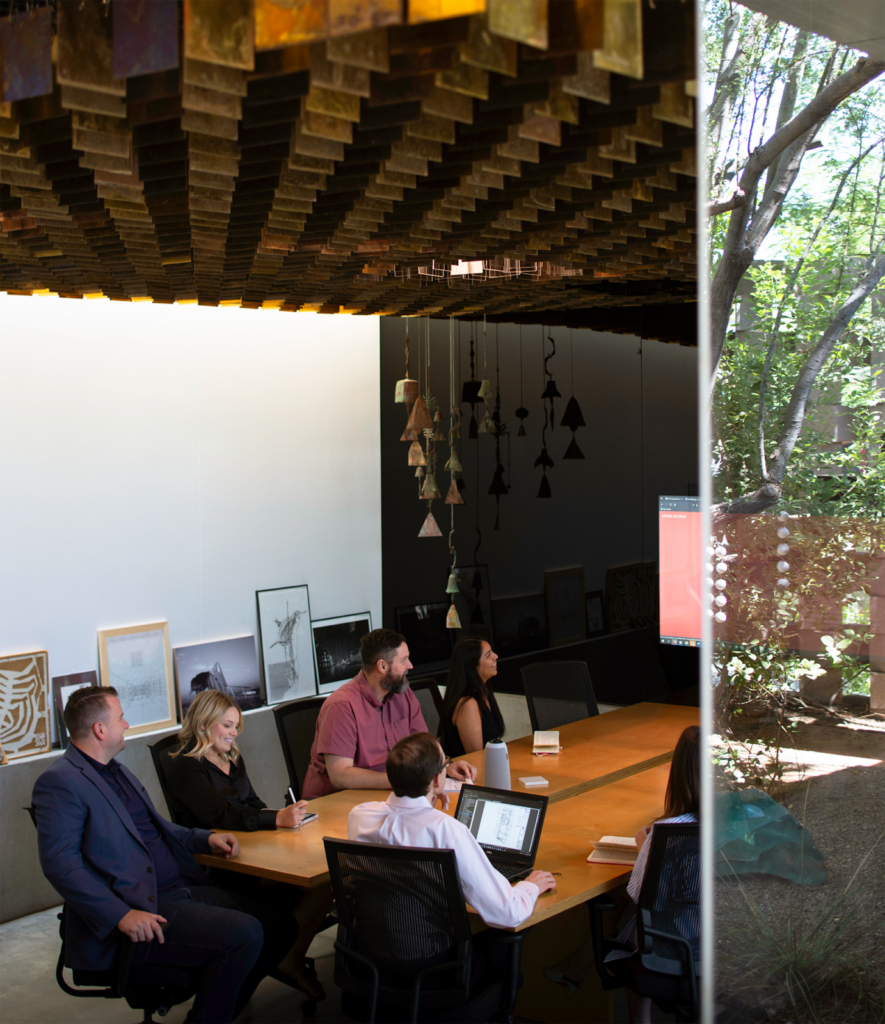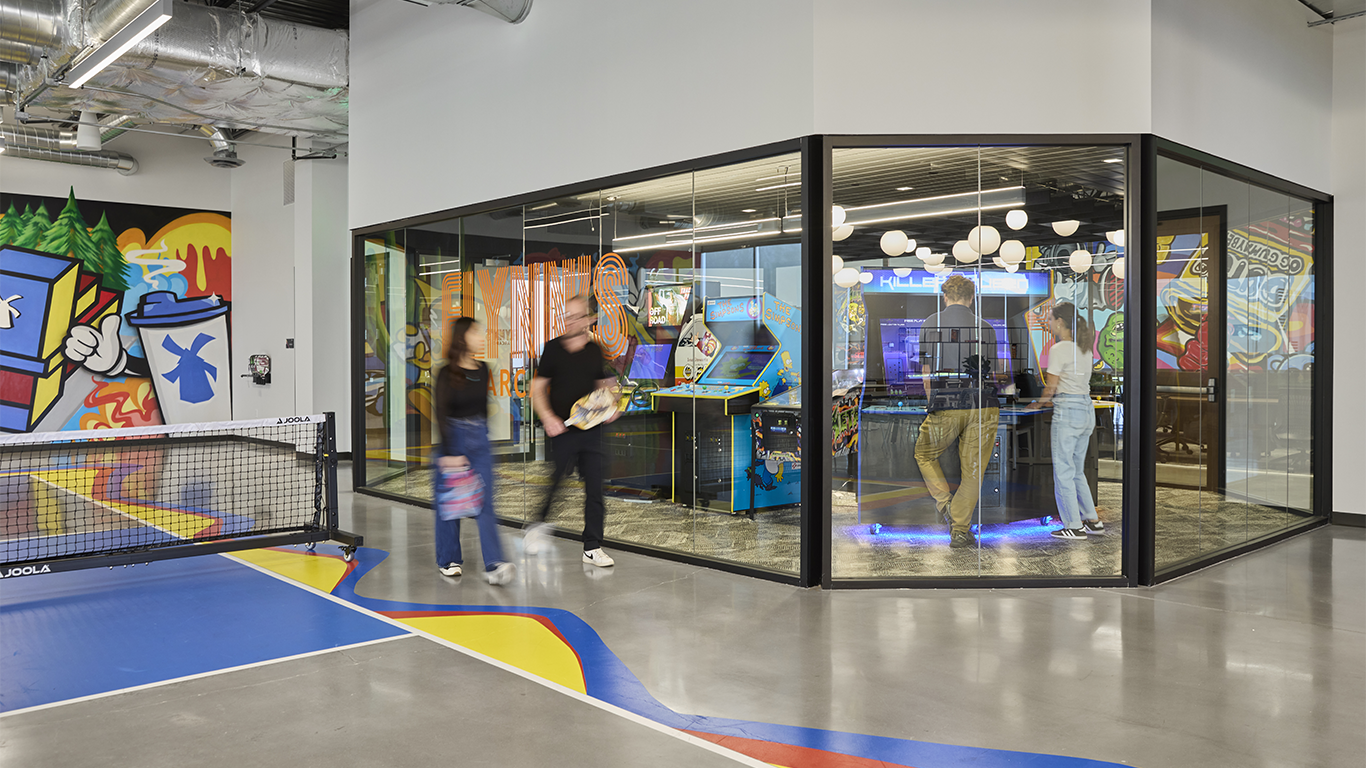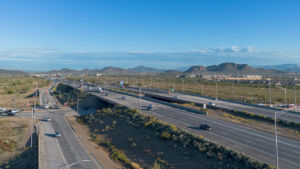Morning commutes have been standard practice in the professional world for decades — a routine that can feel somewhat irritating or even outright dreary. For many, this requirement remained an unchallenged part of their careers until the outbreak of COVID-19, when the phrase “unprecedented times” began cropping up in emails and businesses scrambled to establish remote work policies. But today, more companies are calling for a return to the office as the true purpose of a physical gathering space is redefined. And with that, new office trends are redefining today’s workplace and the new 9-5.
“What we learned from the pandemic is the importance of human connection and collaboration,” explains Layna Justice, director of interior design at LGE Design Build. “People are more efficient when they are together, but the question is how to get them to come back.”
Answering emails in pajamas and enjoying more free time generally are hard-to-beat benefits of working from home, but a recent study shows these perks do not necessarily translate into a deeper sense of wellbeing.
According to Gallup’s 2025 State of the Global Workplace Report, fully remote employees “are more likely to report experiencing anger, sadness and loneliness than hybrid and on-site workers.” The survey also found that engagement fell from 23% to 21% in 2024 — only the second time this metric has decreased in the past 12 years — representing $438 billion in lost productivity across the globe.
With data suggesting even a partial return to office can result in greater quality of life for workers and increased profitability for companies, creating purposeful, well-designed offices is more important now than ever.
DEEPER DIVE: Here are the 10 coolest offices in Arizona for 2025
LOCAL NEWS: 10 things you may not know are manufactured in Arizona
INDUSTRY INSIGHTS: Want more news like this? Get our free newsletter here
Remaining flexible
If the physical environment people occupy can have such an impact on performance, what can architects and designers even do to encourage collaboration? Part of the answer, says Beth Katz, principal at KatzDesignGroup, is to understand what folks want in the first place. For example, one of her clients conducted an employee survey to identify how the office could be reoriented to make the return more successful.
“One of the big things people asked for was more private space to speak freely on the phone like they did from home,” Katz continues. “But they also wanted these rooms to still be big enough for small group collaboration. It used to be common for workplaces to have open areas alongside tiny telephone rooms for a single person, but people are saying they don’t want that.”
At Jones Studio, Brian Farling, co-owner and principal of the firm, says that they’re incorporating these types of rooms for focused work or smaller breakouts within their office designs.
“That variety accommodates the needs of employees while keeping the focus on people sharing the larger space,” he continues. “When there are partitions in the common areas, it’s hard to share with your neighbors, because as soon as you sit down in a cubicle, you’re not interacting in the same visceral way.”
Different professions have their own work styles, so Justice suggests that companies should evaluate their operations to identify the right balance of collaborative and private spaces. Having options is always nice, and offering different environments makes the office seem more inviting and centered on the human experience.
“If someone is feeling sociable, they can go sit in an open collaborative area. Maybe the next day, they’re stressed or need to really focus, which are what the quiet rooms are for,” Justice says. “People love making choices, and it gives them a stake in how they’re using the space.”
That said, too many options can be paralyzing, which is why Justice says the trend of having completely open offices with no assigned seating is starting to fade.
“Not knowing where you’re going to sit each day can cause some anxiety, and having a landing zone helps relieve some of that,” she continues. “We all have a natural inclination for personalization, so I think keeping dedicated desks is an important part of making the office feel pleasant and welcoming.”
Natural connection
To the untrained eye, elegant design tends to be imperceptible despite the concrete effect it has on how someone experiences an environment. Farling says the key to creating human-centric spaces starts with lighting.
“Having more than one source of daylight connects the time spent working with the movement of the sun, but it must be carefully planned. If the windows aren’t oriented correctly, you’ll end up with sharp, high contrast sunlight coming in, which also causes heat gain issues,” he continues. “I’ve always felt that our office is serene and peaceful thanks to the soft, indirect light that comes into the space.”

Whenever Katz starts a new design, she ensures natural light penetrates the entire room because of the calming effect it has. A previous boss, she recalls, once told her if people have a comfortable chair, good air conditioning and natural light, they’ll be happy.
“Those three things may sound simple, but being comfortable in a space does make people more willing to interact with each other,” Katz says.
Once seen as an amenity, Justice notes that access to sunlight is now expected. This desire is reflected in the trend of shuffling the traditional organization of the workplace. Rather than placing offices along the perimeter, more layouts are clustering them in the middle.
“That way, light filters through the open space while still reaching the private offices,” Justice continues. “It also prioritizes employees, so they can enjoy the scenic views.”
Beyond access to sunlight, outdoor spaces help establish a sense of place and belonging. Todd Briggs, principal at TRUEFORM Landscape Architecture Studio, says success comes down to integrating experiences — helping the overall design feel greater than the sum of its parts.
“It’s not enough to just put in a couple trees and a table,” he says. “The landscape has to be like an extension of the interior. When we work with great architects, the outdoors starts to fold inwards, creating a seamless transition that make both spaces more memorable and magnetic.”
For example, at the Jones Studio office, a six-foot strip of garden space lines the north side of the building that opens up into the parking area. Farling says that at certain times of the day, the sun reflects off the plants and cacti causing green light to pour indoors.
“It doesn’t take much exterior space to make a powerful contribution to the interior — just a lot of thoughtful planning of how to connect what’s happening inside with the daylight outside,” he continues.
Creating culture
Designing spaces that prioritize flexibility and connection to nature facilitates collaboration — but there’s also a push to include more creature comforts for workers. Jennifer Swanton, director of business strategy and growth for DAVIS, says that amenities tilted towards physical and mental wellbeing are a growing trend.
She points to a general contractor client who has two locker rooms with showers as an example of providing a useful resource for employees. Many of the company’s workers spend their days on job sites, so providing a place to wash up before an important meeting or going out to dinner after hours is a welcome benefit.
“Companies are being very intentional with what they’re providing employees,” Swanton continues. “Lots of people are threatening to leave if they are required to come back into the office, but I think working in-person is becoming the norm again. That means it’s even more important to be thoughtful of what we’re creating to attract and retain talent.”
Beyond gyms and locker rooms, Justice says more spa-like features like saunas and cold plunges act as a counterweight to the stresses of work. Designers and architects are also incorporating more food and beverage options into offices.
“Companies can use those for clients as a sales tactic, but it’s also a cool amenity for employees,” she continues. “The trend of putting in activities like ping pong tables is fading because realistically, people weren’t getting up in the middle of the day to play games.”
Alongside breakrooms and cafes for workers, some offices are building speakeasies into their spaces. Katz mentions she recently finished a project that converted an executive’s office into a small cocktail lounge after he retired. The company needed more conference space and wanted a memorable and sophisticated location to ink deals.
“The speakeasy is themed like old Wall Street since they’re a financial firm,” she continues. “You enter through a bookcase, transitioning from a modern environment into one with Old World molding, lots of brass and cozy chairs. We also asked employees for their work anniversaries dates or kids’ birthdays and created a custom wallpaper that looks like a stock ticker. Adding that personalized touch helped employees feel like that room belonged to them too.”
Despite the chaos created by the pandemic, today’s office space are — to use another overwrought phrase from the era — adapting to this “new normal” in working life.
“COVID-19 turned everything upside down, and everyone is still learning from that experience,” Farling concludes. “We’re all trying to figure out how to optimize our daily lives so we’re both productive and happy, balancing all the elements that make us human beings.”





